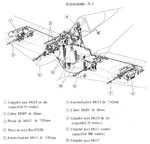- Thread starter
- #41
Fokker D21
Airman
He HoHun
I just read your website HoHun's Air Warrior 3 Site (Main Page)
I noticed that you have some missing data. Even if you don't entirely agree with my formula (or agree at all), my website still gives a lot of technical data about projectile weight (not cartidge weight), muzzle velocity, rate of fire, ammunition make up, gun weight, types of guns used per fighter and ammunition supply.
I also noticed that according to both your and my calculations the MK 108 is the most efficient weapon used during world war two.
I just read your website HoHun's Air Warrior 3 Site (Main Page)
I noticed that you have some missing data. Even if you don't entirely agree with my formula (or agree at all), my website still gives a lot of technical data about projectile weight (not cartidge weight), muzzle velocity, rate of fire, ammunition make up, gun weight, types of guns used per fighter and ammunition supply.
I also noticed that according to both your and my calculations the MK 108 is the most efficient weapon used during world war two.

